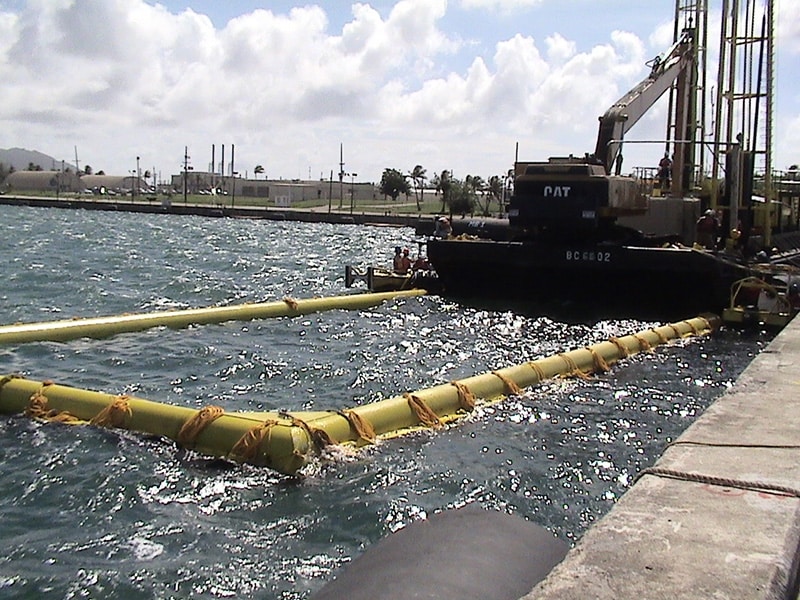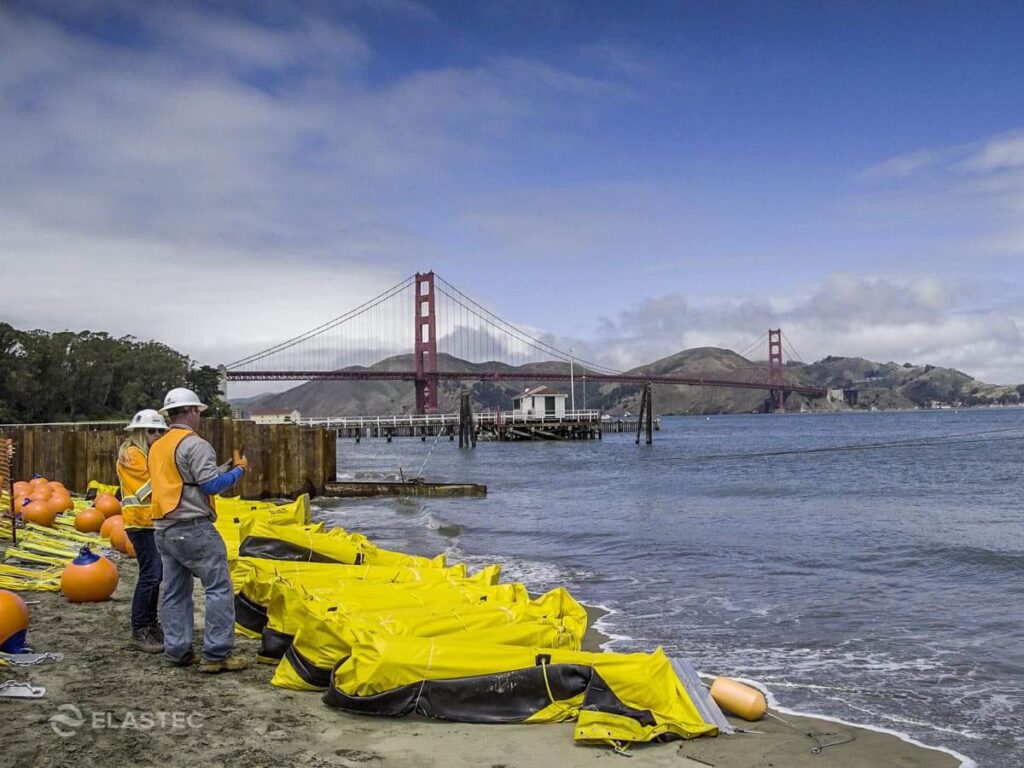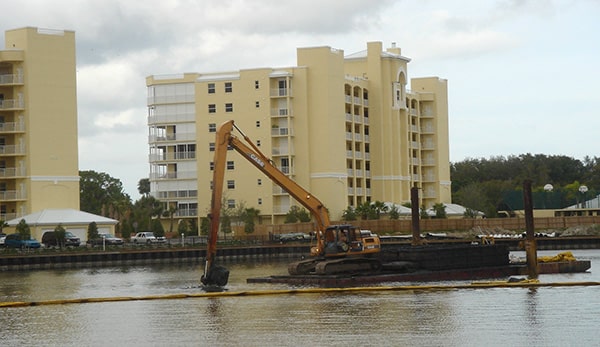Dredging, the process of removing underwater sediment, plays a crucial role in maintaining waterways for navigation, flood control, and coastal development. However, this necessary activity can stir up clouds of silt and sediment, harming marine life and ecosystems. Floating silt curtains, or turbidity curtains as they are sometimes called, deployed strategically, act as a vital line of defense to minimize the environmental impact of dredging projects.

Understanding the Disruption: Silt, Sediment and Turbidity
Dredging disrupts the underwater landscape, churning up bottom sediments like sand, silt, and clay. These particles become suspended in the water column, increasing turbidity or cloudiness. Highly turbid water reduces sunlight penetration, hindering photosynthesis by aquatic plants. This disrupts the food chain at the base, impacting fish, invertebrates, and other organisms that rely on these plants for food or habitat.
Sediment can also clog fish gills, reducing their ability to breathe and extract oxygen from the water. Additionally, the settlement of these particles can smother benthic communities, the animals living on the seabed.
The Role of Silt Curtains: A Physical Barrier
Silt curtains, also known as turbidity curtains, are floating barriers designed to minimize the spread of disturbed sediment during dredging operations. They typically consist of a woven geotextile fabric panel attached to a flotation element along the top and a ballast (weight) along the bottom.
Deployment Strategies for Effective Mitigation
The success of silt curtains depends on several factors, including proper deployment strategies. Here are some key aspects to consider:
- Placement: Silt curtains are strategically positioned to enclose the dredging area. Factors like water currents, depth, and bottom topography are considered to maximize their effectiveness.
- Depth: Depth: The ideal depth for a silt curtain depends on the project specifics. In some cases, the curtain may extend from the water surface all the way to 1 foot from the seabed. In deeper waters, this might not be feasible, so the curtain may reach a certain depth, and other mitigation measures might be employed.
- Length: The length of the silt curtain will vary depending on the size and layout of the dredging area. Overlapping sections are often used to create a continuous barrier and prevent bypass flow (turbid water flowing around the edges of the curtain).
Limitations and Considerations
While silt curtains are a valuable tool, it’s important to acknowledge their limitations. They may not be 100% effective in containing all sediment, especially under strong currents or wave action. Here are some additional considerations:
- Regular Monitoring: Silt curtains require regular inspection and maintenance throughout the dredging project. Tears or breaches need to be repaired promptly to ensure their efficacy.
- Seabed Conditions: The effectiveness of silt curtains can be hampered by uneven or irregular seabed conditions. Gaps between the curtain and the bottom can allow sediment to flow underneath.
- Alternative Measures: In some cases, silt curtains might be used in conjunction with other mitigation measures, such as dredging techniques that minimize sediment disturbance or bottom suction devices that capture sediment at the source.
Dredging is essential for maintaining functional waterways, but it can have environmental consequences. Silt curtains play a crucial role in mitigating these impacts by containing disturbed sediment and protecting the surrounding water body. By understanding their deployment strategies and limitations, dredging projects can achieve their goals while minimizing their environmental footprint.
Connect With Us
Sign up for our newsletters to receive the latest news and product information from Elastec.



